Asheville Citizen Times donates archives of 'unprecedented' photographic history to UNCA
ASHEVILLE - There's a treasure trove in the basement of the Asheville Citizen Times building. It's what Gene Hyde, Head of Special Collections at UNC Asheville's Ramsey Library, calls the "Holy Grail" of Asheville's archival history — thousands of photographs dating back to the paper's 1870s origins.
But for nearly a decade, the archive, often called the "photo morgue," in newspaper-speak, has languished. Banks of filing cabinets sat gathering dust, subject only to use by reporters and particularly persistent researchers.
That's about to change. The Citizen Times is donating its photo archives, dated 1870-2000, to UNCA's Ramsey Library, where it will become the university's newest and largest photo collection.
"Photographs really can do something to bring history alive that nothing else can," Hyde said. "And no institution is better suited to more thoroughly and comprehensively document what goes on in a community than a daily paper with photographers. That’s what you do, every single day."
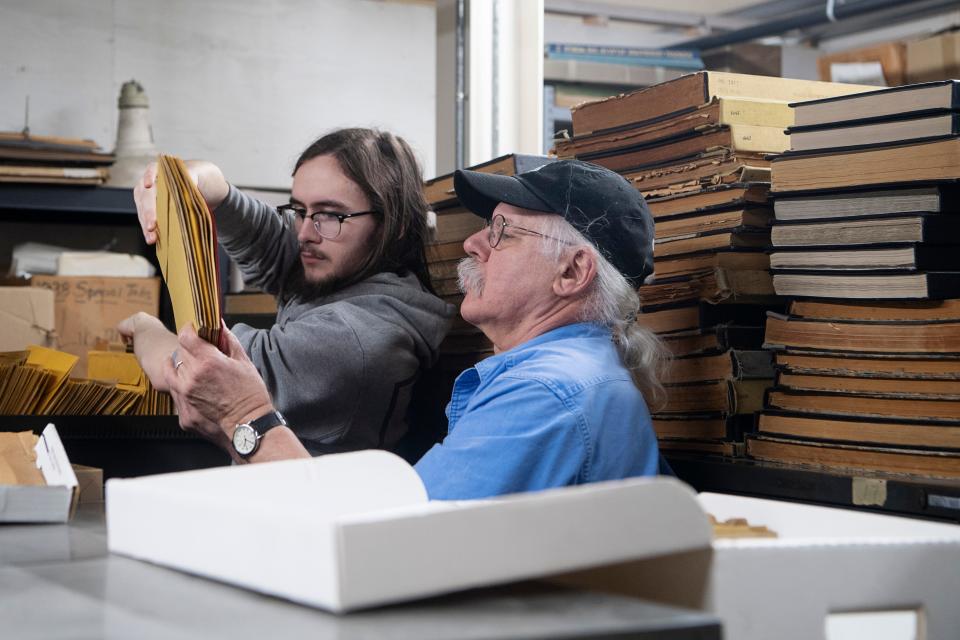
For the first time, the paper's archives will become a public resource. The collection will be organized per archival standards, honoring "original order," Hyde said, put in a temperature controlled space in the university archives, with a guide created to navigate the collection. Eventually, it will be digitized.
It's the "unprecedented, comprehensive, photographic history" of Asheville, Hyde said. Daily newspapers keep the record of their regions. As the collection tells the sprawling history of the Citizen Times, so too it tells a story of the city.
“The broad community implications of what the archive means is so historically important," said Paul Bonesteel, a local documentary filmmaker.
Even as the media industry struggles, the photo archive remains, documenting more than 150 years of coverage in Western North Carolina. "My appreciation for the value of a daily newspaper has never been higher," Bonesteel said. "And of course the industry has never been in worse shape."
State of news: 1/3 of newspapers gone in 2 years; what about in Asheville, WNC?
Why is ACT donating its collection?
It was Bonesteel who sounded the alarm to the paper's Executive Editor Karen Chávez shortly after she took the helm in 2022.
He said he'd been trying to get into the collection for years. He traced the origins of his efforts back to his 2002 documentary about George Masa, a Japanese photographer whose work helped establish the Great Smoky Mountains National Park and the Appalachian Trail.
Bonesteel’s research found Masa worked as a staff photographer for the Asheville Times, which decades later would merge with the Asheville Citizen to become the iteration that exists today. He took photographs for both publications throughout the 1920s and into the early '30s.
It wasn't until his work creating "Muni" in 2019, a documentary detailing the history of the Asheville Municipal Golf Course, home to to Skyview Golf Tournament, the longest running Black-owned and operated professional tournament in the country, that Bonesteel gained access.
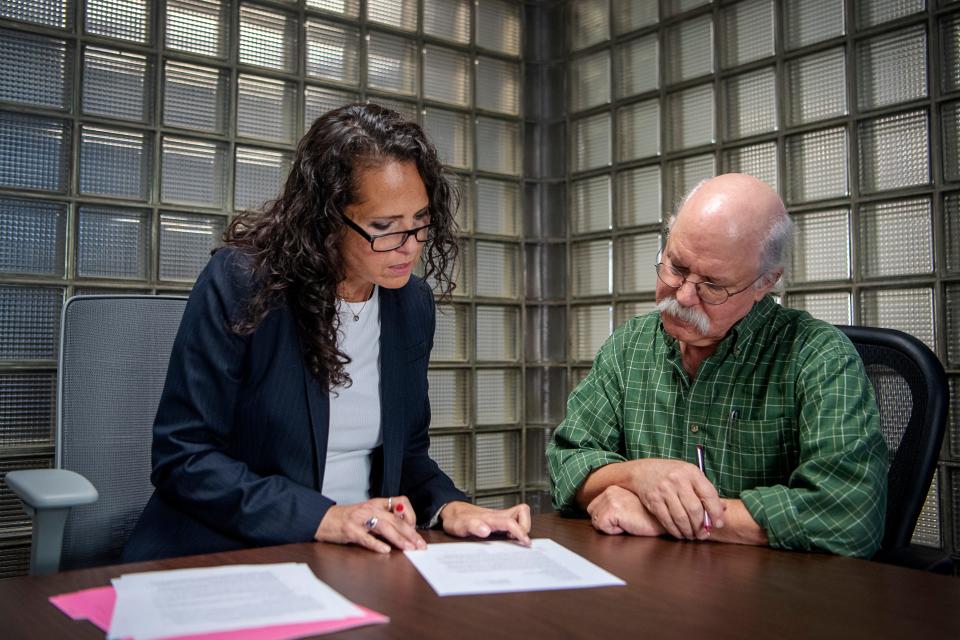
“For years and years, because the archive wasn’t being utilized as it had for decades, it had gone into disrepair," he said. "And it was getting worse.”
Chávez said preserving the archive was among her first pursuits after becoming interim executive editor in November 2022. She was officially appointed to the position last March.
“Since starting here as a reporter in 2000, when we were still at the dawn of digitizing, the Citizen Times library and its impressive photo collection have been special to me. I got to work alongside some of the best photographers whose work is in those files, like Ewart Ball and Steve Dixon, John Fletcher and John Coutlakis,” Chávez said.
“Paul called me in fall 2022 to emphasize the urgency of properly protecting our photo archives, and put me in touch with Gene Hyde. We agreed that UNCA's Ramsey Library would be the best place to forever preserve and showcase the Citizen Times’ rich, visual history of Asheville — the good, the bad, the honest and real — to make it accessible to everyone.”
It's also extremely apropos, Chávez said, since UNCA's library is named for D. Hiden Ramsey, the legendary editor and editorial writer for the Asheville Citizen and the Asheville Times from the 1920s to the early 1950s.
Hyde said he's been interested in the collection for a decade, as long as he's been with UNCA Special Collections.
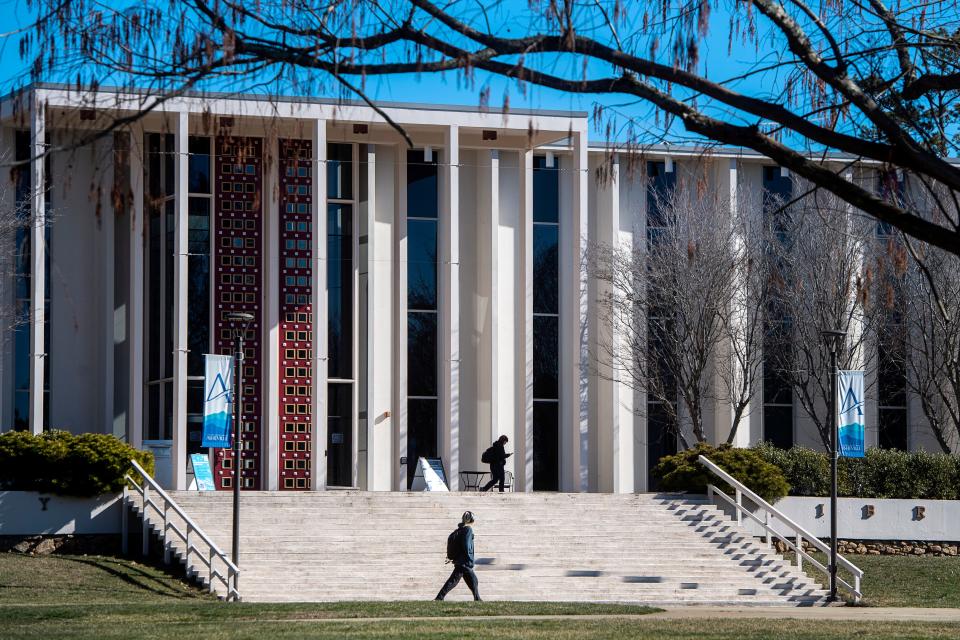
In the boiler room
The archive was first moved into the basement in the 2010s, recalled the paper's former — and last — staff librarian, Holly MacKenzie, in a January conversation with the Citizen Times. She left the paper in 2014. During her time there, which began in 1988, she ran and organized the library. It encompassed photo prints and newspaper clippings, catalogued daily.
A journey down into the bowels of the three-story Asheville Citizen Times building, built for the paper in 1939 and designed by architect Tony Lord, will find you in the boiler room. The maze-like basement, now divided into plywood and chicken-wire cages and largely utilized as storage, was home to the paper's printing press until the 1980s. Metal tracks embedded in the floor were once used to transport large rolls of newsprint.
The air is perfumed with sawdust, hot with the metallic churn of the boiler. There's a faintly acidic scent near the Citizen Times' storage area, where the archives rest, which Hyde said is the smell of decomposing negatives.
Bags of PVC compound, wax beads used to make the pressed vinyl in the record shop, which now sits in the building's first floor where the newsroom once was, are stacked abundantly. In January, exposed piping framed the space where Hyde and Michael Dennis, a senior at UNCA who works at Special Collections, were sifting through the photos — transferring them from the filing cabinets into bankers' boxes and onto a metal cart.

From there, they loaded the boxes into Hyde's Subaru Outback and ferried them to the university library, where they were slotted into archival boxes in the same order in which they were found, largely alphabetical. As they "process" the collection, Hyde, other Special Collections staff and interns, will go through, envelope by envelope, and duplicate the existing label into a "finding aid" online.
As of early February, Hyde said they are about halfway through moving the prints. He hopes for the collection to be moved, processed and available to the public by spring.
The Citizen Times donation includes the photo prints and negatives, but not the newspaper clippings that are also archived in the basement. Those will remain with the paper.
What's in the collection?
The Citizen Times began in 1870 as a weekly, the North Carolina Citizen. The newspaper and its merged variants have inhabited 14 locations over the years, but moved into its current spot at 14 O. Henry Ave. in 1939. Then it was the Asheville Citizen and the Asheville Times, which merged to become the Asheville Citizen Times in 1991.
Gannett acquired the newspaper in 1995. It sold the historic building to local investors in 2018. The Citizen Times now leases part of the second floor.
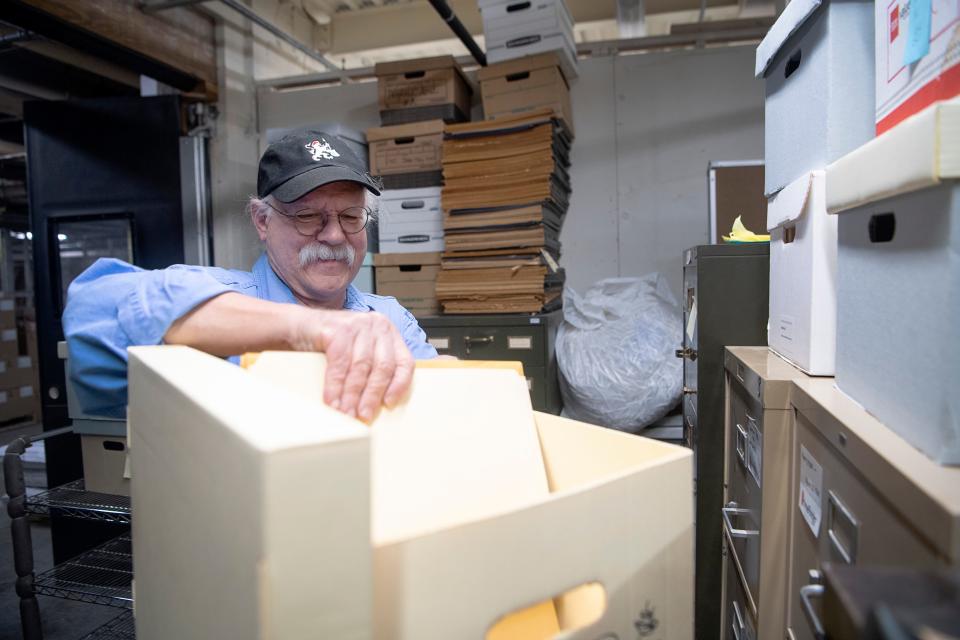
When MacKenzie first came to the paper she inherited the care of the collection from former librarian Lucille Hearn, whom she credited as being the "mastermind" behind the archive. Then, the library was on the second floor in a space often referred to as the "sunroom." It doesn't exist anymore, but was once accessed through a doorway where the back wall of the newsroom now resides.
How it worked: Photographers, be it staff, freelance or other third parties, took photos for the paper. After a photo was developed, it came to the library, typically the day after running in print. Photos were identified, dated, sometimes stamped with the photographer's name, and filed in an envelope and labeled with its cutline. Parallel to this process, the librarian and her assistant were also clipping articles from the newspapers and filing those, as well. Negatives were also stored.
They switched over to a digital system, in the 1990s.
“It’s a real history of Asheville," MacKenzie said, one she was glad to hear would now be preserved.
Answer Woman: What happened to the vintage rides at Asheville's Rec Park? When did they disappear?
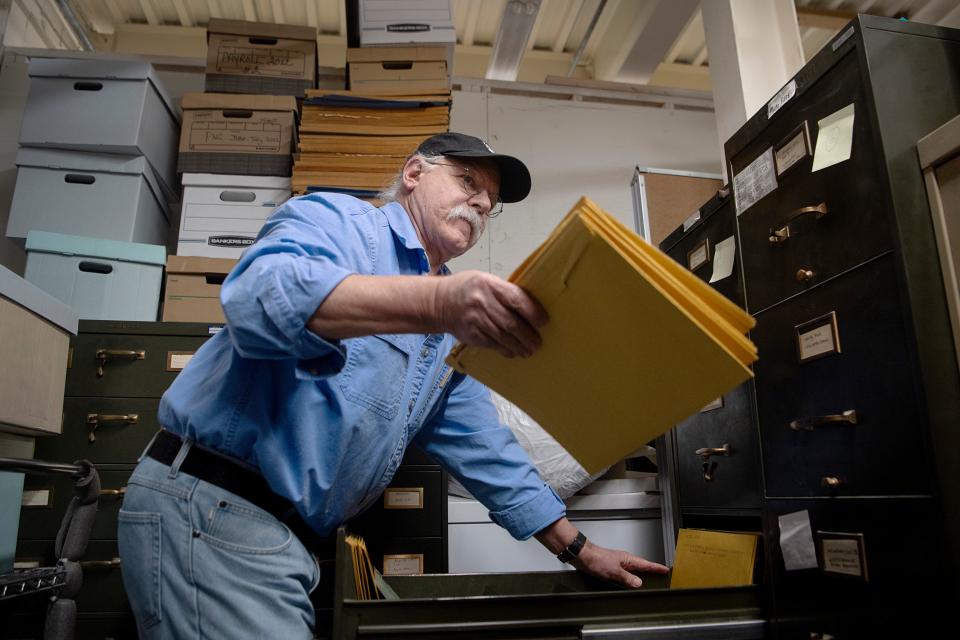
A new angle into history
The Citizen Times has had a number of notable staff photographers. This includes Ewart Ball Jr., whose work, along with father, Ewart Ball Sr., is archived in what, until now, has been UNCA Special Collection's largest photo collection. There will be overlap between the collections. More work of Masa is also likely to be unearthed.
During a Citizen Times visit to the university archives in January, pulling a file to demonstrate the breadth of the collection, Hyde selected, at random, a Ball photo.
It depicted the eerie landscape of the Blue Ridge Mountain Shrine, an art installation from the '50s, built 16 miles east of Asheville on U.S. 74. But as Hyde noted, a single photo hardly scratches the surface of what he estimates to be 200 linear feet of material.
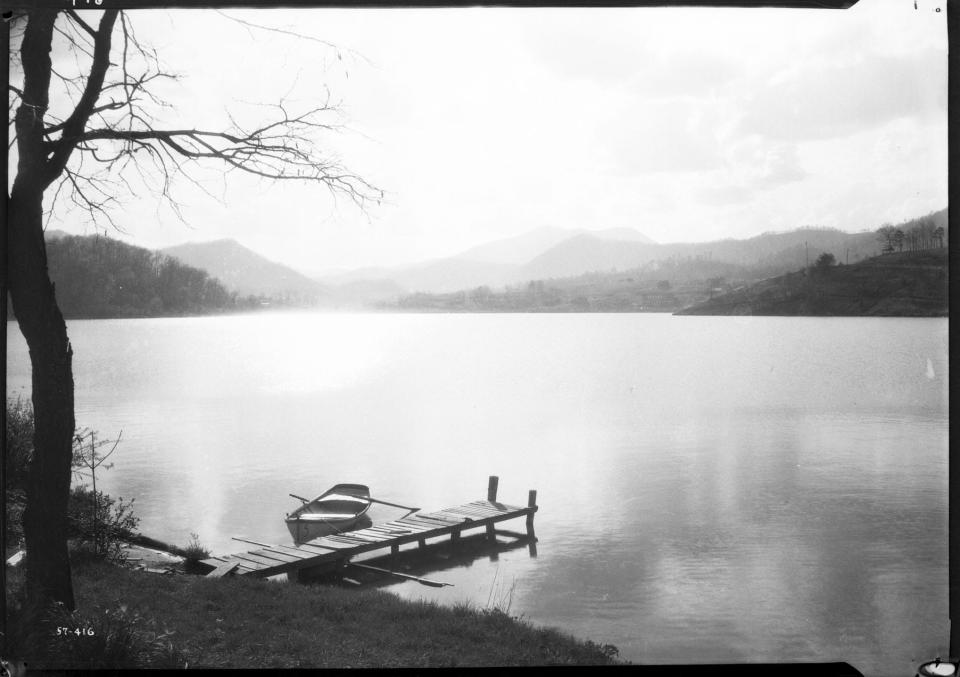
Any visit to the boiler room could span centuries.
Sarah Judson, professor and chair of UNCA's history department, said the donation will result in more than just preservation. It offers a "unique opportunity" for students and others to further their research, providing a different view of local history.
“(Photos) can confirm stories. They can show us the different groups of people who were present. They can help us understand what was important at the time period when the photograph was taken," Judson said. They offer a "new angle" into narratives where a final story was thought to already be written.
Bonesteel described the vitality of the collection. Of seeing the shots, year over year, the spools of the negatives, the beauty of the "raw materials." In the case of the Skyview Golf Tournament, images of the event, across 40 years, were nowhere to be found outside of the Citizen Times' collection. He called them "invaluable."
"The work of regional filmmaking would be virtually impossible without access to the history of the region in its photo collections," Bonesteel said later, in a email. "My past projects, about George Masa, Quilt Revival, Carl Sandburg, Carl Schenck, Graveyard Fields and Muni were all enhanced by access to images that help tell the story, or in some cases are the story."
Of the phrase, "photo morgue," Bonesteel said he doesn't like to refer to it that way.
“It just doesn’t apply in my mind, because the images are so alive. And so living," he said. "They’re far from dead.”
More: Amid homelessness, Asheville couple marries in church where they took shelter years before
More: Before and after: How does Asheville Muni golf course look after a year of renovations?
Sarah Honosky is the city government reporter for the Asheville Citizen Times, part of the USA TODAY Network. News Tips? Email shonosky@citizentimes.com or message on Twitter at @slhonosky. Please support local, daily journalism with a subscription to the Citizen Times.
This article originally appeared on Asheville Citizen Times: Asheville Citizen Times photo archives donated to UNC Asheville

